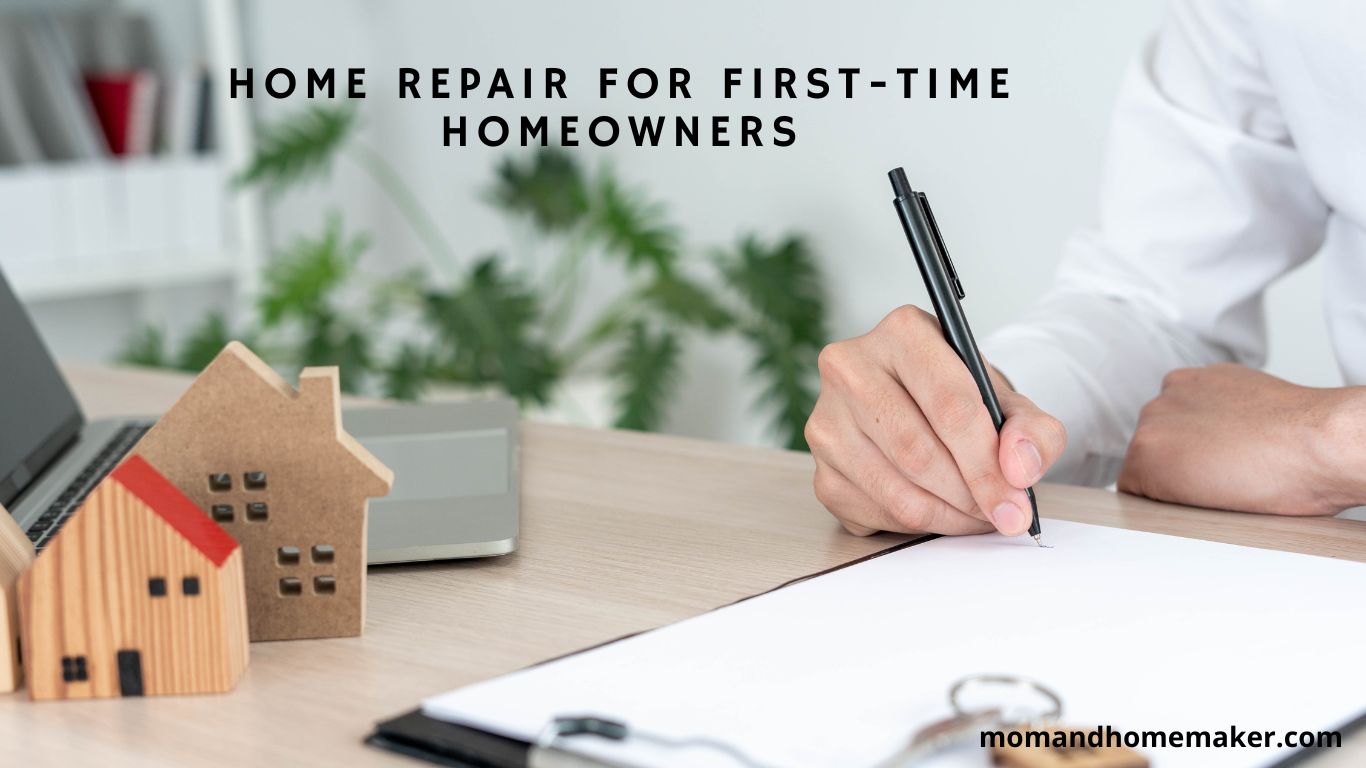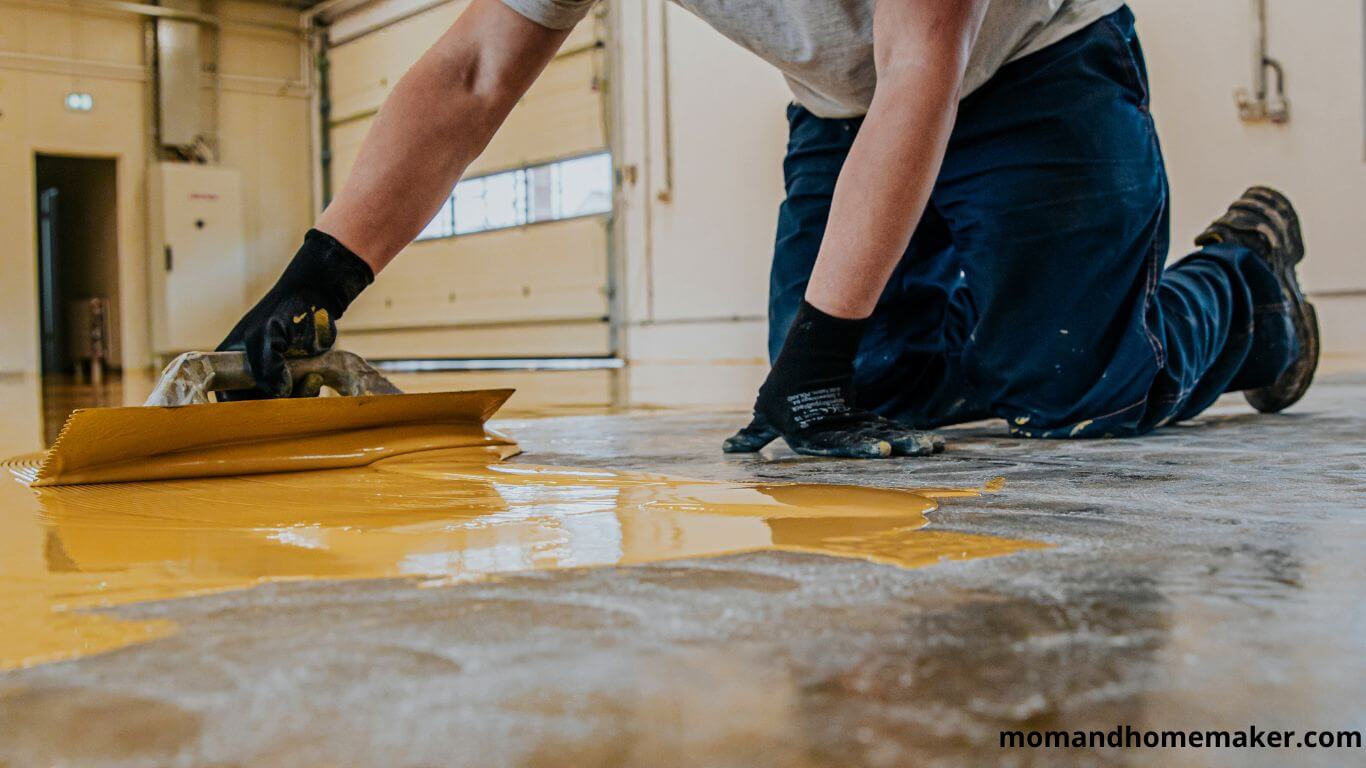Being a first-time homeowner comes with the responsibility of maintaining and repairing your home. For many first-time homeowners, the prospect of tackling home repairs can be daunting. However, with the right knowledge and guidance, even novice homeowners can navigate the world of home maintenance and repairs with confidence.
From basic plumbing and electrical safety tips to fixing walls and troubleshooting HVAC systems, we’ve got you covered.
With this knowledge, you’ll be ready to confidently tackle any home repairs and keep your new home in great condition for years to come.
Plumbing Basics
To understand plumbing basics, it’s important to become familiar with the main components of a plumbing system. Plumbing installation and pipe maintenance are essential for keeping your plumbing system functional and efficient in your home.
Plumbing installation involves the process of installing various plumbing components, such as pipes, faucets, and fixtures, to ensure that your plumbing system works properly. To make sure everything is done correctly and meets the code, it’s best to hire a professional plumber. They have the expertise and experience to handle any challenges that may arise during the installation process.
Once your plumbing system is installed, regular pipe maintenance is crucial to prevent potential issues. This includes inspecting pipes for leaks, corrosion, or any signs of damage. Regularly cleaning your drains will also help prevent clogs and maintain proper water flow. By performing regular maintenance, you can identify potential problems early on and avoid costly repairs in the future.
In addition to plumbing installation and pipe maintenance, it’s important to understand the basics of water supply and drainage systems. This includes knowing the location of your main water shut-off valve and sewer clean-out. Understanding how to troubleshoot common plumbing issues like low water pressure or a clogged toilet is also helpful.
Electrical Safety Tips
To ensure the safety of your new home, it’s crucial to take proper precautions when dealing with electrical wiring and outlets. Here are some important electrical safety tips to keep in mind:
- Hire a professional electrician:
When it comes to major electrical work, it’s best to leave it to the experts. Professional electricians have the necessary knowledge and experience to handle complex tasks safely and ensure they meet code requirements.
- Regularly inspect your electrical wiring:
Take the time to inspect your electrical wiring regularly. Look for any signs of wear, frayed wires, or loose connections. If you notice any issues, it’s important to have them addressed by a professional electrician to prevent the risk of electrical fires.
- Avoid overloading outlets:
Plugging too many appliances or devices into a single outlet can lead to overheating and potentially cause a fire. Be mindful of the number of devices you plug into each outlet and consider using power strips or extension cords with built-in circuit breakers to prevent overloading.
- Use surge protectors:
Power surges can damage sensitive electronic equipment and even cause fires. Invest in surge protectors to safeguard your valuable devices. They’ll provide protection and peace of mind in case of unexpected power fluctuations.
Wall Repair Techniques
If you need to repair the walls in your new home, there are a few techniques you can use to fix them. Learning how to repair walls is an important skill for homeowners, and with a little practice, you can easily handle small repairs on your own.
Here are three wall repair techniques that will help you restore the beauty of your walls:
- Patching Holes: Whether it’s a small nail hole or a larger hole from a doorknob, fixing holes in your walls is a simple process. Start by cleaning the area around the hole and removing any loose debris. Then, use a patching compound or spackle to fill the hole. Smooth it out with a putty knife, let it dry, and sand it down until it’s even with the wall. Once it’s smooth, you can paint over it using the appropriate wall painting techniques.
- Fixing Cracks: Cracks in your walls can be unattractive and may indicate underlying structural issues. To fix them, begin by slightly widening the crack with a utility knife. Then, apply a joint compound or drywall mud to the crack, using a putty knife to smooth it out. Allow it to dry, sand it down, and then apply a second coat if necessary. Once the crack is repaired, you can paint over it to blend it in with the rest of the wall.
- Covering Water Damage: Water damage can be a common problem, particularly in bathrooms or near windows. To repair water-damaged walls, start by removing any loose or damaged drywall. Once the area is clean, apply a stain-blocking primer to prevent further damage. Then, patch the area with joint compound or drywall mud, and sand it down until it’s smooth. Finally, you can paint over the repaired area using the appropriate wall painting techniques to match the rest of the wall.
Fixing Leaky Faucets
Fixing leaky faucets is a common plumbing repair task that can easily be tackled by first-time homeowners. Dealing with a leaky faucet can be frustrating, but with a little knowledge and the right tools, you can fix it yourself and save some money.
To start, turn off the water supply to the faucet. Look for the shut-off valves under the sink and twist them clockwise until the water stops flowing. This step is crucial to prevent any water leakage while you work on the faucet.
Next, disassemble the faucet to locate the source of the leak. Begin by removing the handle, then unscrew the cap and bonnet. Once you have access to the internal parts, carefully inspect them for any damaged or worn-out washers, O-rings, or seals. These components are often the cause of leaky faucets.
If you identify any damaged parts, no worries! You can easily replace them. Visit your local hardware store, where you’ll find faucet repair kits that contain all the necessary components. Follow the instructions provided with the kit to install the new parts. Remember to tighten everything securely, but be cautious not to overtighten, as this can cause damage.
Once you have replaced the faulty parts, reassemble the faucet and turn on the water supply. Check for any leaks and ensure that the faucet is working properly. If the problem persists, it may be best to call a professional plumber to assess and fix the issue.
Fixing leaky faucets can be a satisfying DIY task for first-time homeowners. With a little patience and the right tools, you can successfully tackle faucet repair and save money in the process. However, if you ever feel overwhelmed or unsure, it’s always best to seek professional help. A qualified plumber can provide expert assistance and ensure the problem is resolved effectively.
Troubleshooting HVAC Systems
When troubleshooting HVAC systems, it’s important to have a basic understanding of how they work and the common issues that may arise. Here are three common problems you may encounter with your HVAC system, along with some troubleshooting tips:
- Dealing with thermostat issues:
- Check the batteries: If your thermostat isn’t working, the first thing you should do is check the batteries. If they’re dead, replace them.
- Reset the thermostat: Sometimes, a simple reset can fix thermostat issues. Turn off the power to the HVAC system, wait a few minutes, and then turn it back on.
- Inspect the wiring: Loose or damaged wiring can cause problems with your thermostat. Check the wiring and tighten any loose connections or replace damaged wires.
- Addressing air conditioning problems:
- Check the air filter: A clogged or dirty air filter can restrict airflow and cause your air conditioning system to work inefficiently or not cool at all. Make sure to replace the air filter regularly to ensure proper airflow.
- Check the circuit breaker: If your air conditioner isn’t turning on, check the circuit breaker to make sure it hasn’t tripped. Reset it if necessary.
- Clean the condenser unit: The condenser unit, located outside, can become dirty or blocked, hindering the cooling process. Clean the unit and remove any debris that may be blocking airflow.
Painting Tips and Tricks
Now that you have successfully fixed your HVAC system, let’s explore some helpful painting tips and tricks for new homeowners.
Painting is a fantastic way to add a personal touch to your new home and truly make it your own. Whether you’re painting a single room or the entire house, these techniques will help you achieve professional-looking results.
When selecting colors for your home, consider the mood you want to create in each room. Soft, neutral tones like beige and gray can create a calming and relaxing atmosphere, while bold and vibrant colors like red and blue can add energy and excitement. Don’t hesitate to experiment with different shades and hues to discover what suits you best.
Before you begin painting, it’s essential to properly prepare the surfaces. Thoroughly clean the walls to remove any dirt or grease, and patch any holes or cracks with spackling compound. Lightly sand the surfaces to ensure a smooth finish.
Investing in high-quality paint and brushes will yield better results. Cheap brushes may leave streaks and hairs on the wall, while low-quality paint might require multiple coats for proper coverage. Apply paint in thin, even coats, using long, smooth strokes. This technique will help you achieve a professional finish and prevent drips and streaks.
Consider utilizing painter’s tape to create clean and precise lines between different colors or when painting trim. This will give your paint job a polished look and enhance its professional appearance.
Repairing Squeaky Floors
If you’re dealing with squeaky floors, don’t worry, there are simple steps you can take to fix the problem and enjoy a quieter home.
First, identify the source of the noise and secure any loose floorboards or subflooring.
Once that’s done, follow these steps:
- Fixing Creaking Stairs: Squeaky stairs can be a real nuisance, but they’re easily fixed. Start by walking up and down the stairs to locate the squeaky step. Once you’ve found it, use a hammer and nails to secure the tread to the riser. If the squeak persists, you can also try using wood shims or screws to further secure the step.
- Lubricating Door Hinges: Squeaky door hinges can disrupt the peaceful atmosphere in your home. To fix this issue, begin by removing the hinge pin from the hinge. Then, clean both the hinge pin and the hinge itself with a cloth to remove any dirt or debris. Once they’re clean, apply a small amount of lubricant, such as WD-40 or silicone spray, to the hinge pin. Finally, reinsert the pin into the hinge and open and close the door a few times to distribute the lubricant.
Window Maintenance and Repairs
As a first-time homeowner, it’s crucial to understand the importance of regular window maintenance and repairs. By keeping your windows clean and in good condition, you can ensure a comfortable and energy-efficient home.
Regular window cleaning is essential for both the appearance and functionality of your windows. Dirty windows can block natural light and obstruct your view, making your home feel dark and closed off. By cleaning your windows regularly, you can let in more natural light, creating a brighter and more inviting atmosphere. Additionally, clean windows can enhance the curb appeal of your home, giving it a well-maintained and welcoming appearance.
However, there may come a time when window replacement is necessary. If you notice any signs of damage, such as cracks, drafts, or condensation between the panes, it’s important to consider replacing your windows. Damaged windows can significantly impact the energy efficiency of your home, leading to higher heating and cooling costs. By investing in new, energy-efficient windows, you can improve insulation and reduce your energy consumption, ultimately saving money in the long run.
When it comes to window replacement, it’s crucial to choose the right type of window for your home. Consider factors such as the climate in your area, the level of insulation you desire, and your budget. Consulting with professionals can help you select the most suitable windows for your needs.
Dealing With Mold and Mildew
Regular window maintenance and repairs are crucial for the appearance, energy efficiency, and overall well-being of your home. They not only enhance the aesthetics but also play a vital role in preventing the growth of mold and mildew. Mold and mildew thrive in moist environments, and if left unaddressed, they can cause significant damage to your home and pose health risks to you and your family.
To protect your home, follow these three important steps to prevent moisture damage and safely remove mold:
- Control humidity levels: Excess moisture is the primary cause of mold and mildew growth. To prevent this, use dehumidifiers in areas prone to dampness, such as basements and bathrooms. Additionally, promptly fix any leaks or plumbing issues to prevent water from seeping into walls or ceilings.
- Ensure proper ventilation: Adequate ventilation helps reduce moisture buildup and minimize condensation. Install exhaust fans in bathrooms and kitchens to remove excess humidity, and open windows regularly to allow fresh air to circulate. It’s also essential to vent your dryer outside to prevent moisture accumulation indoors.
- Take immediate action against mold: If you spot any signs of mold or mildew, such as a musty odor or visible growth, act promptly. Wear protective gear, including gloves and a mask, and scrub the affected area with a mixture of water and detergent. For extensive mold infestations or if you have respiratory issues, it’s best to seek professional assistance to safely remove the mold.
Preventing and Fixing Roof Leaks
Regularly inspecting your roof and addressing any potential issues is crucial for maintaining a leak-free home. As a first-time homeowner, it’s important to understand the significance of roof maintenance and implementing waterproofing techniques. By taking proactive measures, you can prevent roof leaks and avoid costly repairs in the future.
To start, conduct regular roof inspections to identify signs of damage or wear. Look for cracked or missing shingles, damaged flashing, or any other signs of deterioration. Addressing these issues promptly can prevent water from seeping into your home and causing further damage.
Consider implementing waterproofing techniques to ensure your roof remains leak-free. One effective method is applying a waterproof sealant to the roof surface. This sealant acts as a protective barrier, preventing water from infiltrating the roof and causing leaks. Additionally, make sure to clean your gutters regularly to prevent clogs that can lead to water backup and roof leaks.
In the unfortunate event that you do experience a roof leak, it’s crucial to address it immediately. Start by locating the source of the leak and temporarily stop the water flow with a tarp or bucket. Then, contact a professional roofer to assess and repair the damage. Remember, delaying repairs can result in further damage to your roof and the interior of your home.
Handling Common Appliance Repairs
If you’re having problems with your appliances, it’s important to know how to handle common repairs. Being able to troubleshoot and fix your appliances will save you money and give you a sense of accomplishment.
Here are some techniques and guides to help you out:
- Check the power source: Make sure the appliance is plugged in properly and that the circuit breaker or fuse hasn’t tripped. Sometimes, a simple power issue can cause the appliance to malfunction.
- Clean or replace filters: Many appliances, like air conditioners, refrigerators, and dishwashers, have filters that can get clogged with dirt and debris over time. Cleaning or replacing these filters can often resolve performance issues.
- Consult the owner’s manual: Most appliances come with an owner’s manual that provides troubleshooting tips and step-by-step repair instructions. Take the time to read it and follow the recommended troubleshooting steps before attempting any repairs.
If the troubleshooting techniques and DIY repair guides don’t solve the problem or if you’re uncomfortable with attempting the repairs yourself, it’s best to call a professional appliance repair service. They have the expertise and tools necessary to diagnose and fix complex issues.
Flooring Maintenance and Repairs
Properly maintaining and repairing your flooring is crucial for its longevity and the overall appearance of your home. Whether you have hardwood, laminate, or carpet, following these guidelines will help you take care of your floors and preserve their beauty. Here are some essential tips for maintaining and repairing different types of flooring:
Hardwood:
- Regularly sweep or vacuum to remove dirt and debris.
- Use a damp mop with a mild cleaner specifically designed for hardwood floors.
- Avoid excessive moisture to prevent warping or damage.
- Place protective pads under furniture legs to prevent scratches.
- Refinish the floor every few years to restore its shine and protect it from wear and tear.
Laminate:
- Sweep or vacuum regularly to remove dust and dirt.
- Clean up spills immediately to prevent damage.
- Use a damp mop with a gentle cleaner made for laminate floors.
- Avoid excessive moisture or steam, as it can cause the laminate to warp.
- Place mats at entryways to trap dirt and prevent scratches.
- Repair any chips or scratches with a laminate repair kit.
Carpet:
- Vacuum regularly to remove dirt and dust.
- Clean up spills immediately to prevent stains.
- Use a carpet cleaner or hire professionals for deep cleaning every 6-12 months.
- Place mats or rugs in high-traffic areas to protect the carpet.
- Repair loose threads or snags with a carpet repair kit.
- Consider professional carpet cleaning every few years for a thorough clean.
Following these maintenance and repair tips will help you keep your flooring in great shape for years to come. Remember to choose the right products and techniques for your specific flooring type to ensure effective cleaning and protection.
Repairing Broken or Damaged Doors
Repairing broken or damaged doors is an important skill for homeowners to ensure their homes are secure and functional. If you’re faced with a broken or damaged door, don’t worry! With a little guidance, you can handle this repair like a pro.
To repair a broken or damaged door, follow these simple steps:
- Repairing Door Frames: Start by checking the door frame for cracks or splintering. If you find any minor damages, use a chisel and wood filler to fix them. For more significant repairs, consider replacing the entire door frame. This will ensure a sturdy and secure fit for your door.
- Replacing Door Hinges: If your door is sagging or not closing properly, faulty hinges may be the culprit. Begin by removing the old hinges using a screwdriver. Purchase new hinges that match the size and style of the old ones. Install the new hinges by screwing them into the door and frame. This will restore the smooth operation of your door.
- Finishing Touches: Once you’ve repaired the door frame and replaced the hinges, it’s time to give your door a fresh look. Smooth out any rough areas by sanding them down, and then apply a coat of paint or stain to match your desired aesthetic. This won’t only improve the appearance of the door but also protect it from future damage.
Basic Carpentry Skills for Home Repairs
Having basic carpentry skills is crucial for homeowners when it comes to making repairs around the house. Knowing some simple carpentry techniques can save you time and money, while also giving you a sense of accomplishment and self-reliance.
Whether you need to fix a squeaky floorboard, repair a broken cabinet, or build a shelf, having a few carpentry skills will come in handy.
To get started with basic carpentry, you’ll need a few essential home repair tools. These include measuring tools like a tape measure and a combination square, which will help ensure accurate cuts and measurements. A circular saw and a jigsaw are also useful for cutting wood and other materials.
A hammer, a set of screwdrivers, and a set of chisels will be necessary for various tasks. And of course, having a power drill with different bits will be invaluable for drilling holes and driving screws.
Once you have your tools ready, it’s time to learn some basic carpentry techniques. Start by practicing measuring and marking, as accuracy is crucial in carpentry. Learn how to make straight cuts with a saw, both by hand and using a circular saw.
Understand how to use a chisel to create mortise and tenon joints, which are commonly used in furniture making. Familiarize yourself with different types of screws and nails, and learn the proper techniques for driving them.
By acquiring these basic carpentry skills, you’ll be well-equipped to tackle a wide range of home repair projects. Not only will you be able to save money by doing it yourself, but you’ll also gain a sense of satisfaction from your handiwork.
Maintaining and Cleaning Gutters
Now that you’ve learned some basic carpentry skills, it’s time to focus on maintaining and cleaning your gutters. Proper gutter maintenance is crucial to prevent water damage and foundation issues by ensuring that rainwater flows away from your home. Here are three important steps to help you keep your gutters clean and in good condition:
- Get the right tools: To effectively clean your gutters, you’ll need a few essential tools. Start by getting a sturdy ladder that allows you to reach the gutters comfortably and safely. You should also consider purchasing a gutter scoop or a trowel to remove debris like leaves and twigs from the gutters. To get rid of any remaining dirt or grime, a high-pressure hose or a gutter cleaning wand can be very useful. These tools will make the gutter cleaning process much easier and more efficient.
- Regularly clean your gutters: It’s important to set a schedule and clean your gutters at least twice a year, preferably in the spring and fall. Regular maintenance will prevent clogs and ensure that water can flow freely through the gutters. Start by removing any large debris by hand or with a scoop. Then, use your hose or cleaning wand to flush out any remaining dirt. Don’t forget to pay attention to the downspouts, as they can also get clogged. Finally, inspect the gutters for any damage or leaks and make any necessary repairs.
- Consider professional gutter cleaning services: If you’re not comfortable working at heights or if your gutters are hard to access, it may be best to hire a professional gutter cleaning service. They’ve the expertise and equipment to ensure a thorough and safe cleaning. Professional services can also identify any potential issues with your gutters, such as loose fasteners or damaged sections, and provide the necessary repairs.
Conclusion
Home repair for first-time homeowners can be a rewarding and empowering experience, allowing individuals to develop valuable skills, gain a deeper understanding of their property, and create a more comfortable living environment.
With the right resources and guidance, they can navigate the challenges of home maintenance and enjoy the satisfaction of enhancing their own living space.






